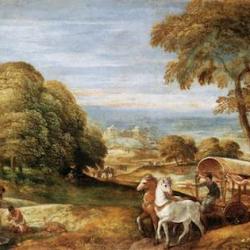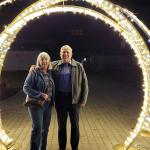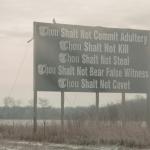MD Goulder argues that death and resurrection is the narrative pattern of Acts (Type and History in Acts). In most cases, there is no actual death. There is near-death, and then deliverance: “The apostolic college, Peter, Paul, in turn go down to the pit: and from the pit they are raised again, the apostolic college, Peter, Paul” (93).
Stephen of course does die, but even his death isn’t the end of the story. It is followed directly by a multiply resurrection, of Paul: “The death of Stephen is connected causally in Acts with the Church’s persecution by Saul, in a way that we have seen. Saul presides at his stoning, Saul was consenting to his death, Saul followed up his burial by making havoc of the Church. The mention of Stephen’s burial by devout men is not insignificant. It reminds us of the burial of his master by another devout man, Joseph of Arimathaea, and leads us to expect God once more to bring life from the dead. Nor is it modem psychologizing which tells us that the martyr’s death was the seed of the apostle’s conversion: for Paul himself said to Jesus on the Damascus road, ‘And when the blood of thy martyr Stephen was shed, I also was standing by. . .’ (22.20). St Luke was not ignorant that the blood of the martyrs was new life to the Church. So he portrays Saul’s entry into the Church as a ‘resurrection.’ He falls to the ground at the vision, and hears Jesus’ voice saying, ‘Rise up’; ‘. . . and Saul was raised up from the earth.” That’s not the end either: He must spend three days, like his Lord, in darkness and fasting, before the act of God is complete. Then, at the hands of Ananias, the scales fall from his eyes, and he enters into the kingdom of light: ‘He arose and was baptized.’ We do not need to be told that his baptism itself was a symbolic dying and rising again with Christ” (93-4). “Rising” is a theme whenever Paul talks about the experience (22:10, 16; 26:16).
Citing 2 Corinthians, Goulder argues that there is a further resurrection following Stephen’s death. Paul ends his recital of his sufferings in 2 Corinthians with a reference to being let down from the wall of Damascus in a basket. Goulder writes that Paul “places his climax after a descending scale of ‘infirmities’ that the point has been missed. He had been at the gates of death that day, if any: it has been the ‘weakest’ moment of his life. So, no doubt, he used to speak of the occasion to St Luke; and for the latter it provides a triumphant anastasis. Saul goes into Damascus as the city of darkness for his three days’ blindness. He breaks out of the city through the walls as Jesus had broken through the wall of the tomb, and Peter was soon to break through the walls of his prison. IfSt Luke has made an error, or a simplification, over the intending agents of his doom, he has taken over the point of the story untouched. God had completed the raising of his apostle” (95).
Not only Paul, but Aeneas (sick with the palsy) and Dorcas are raised following Stephen’s death (Dorcas, also known as Tabitha, recalls Jesus’ “talitha cumi” from Luke). Thus, Stephen’s actual death yields a harvest of three resurrections, and also launches the church into the next phase of ministry: “The raising and ascension ofJesus had brought the release of the Spirit for the preaching of Pentecost. So now the raisings of Saul, Aeneas, and Dorcas lead on to the new and central development of Acts, the preaching to the first Gentile, Cornelius. St Luke really did see the history of the Church as the hand of God moving in the same recurring pattern that men had watched in the incarnation. The raising of the apostles from prison in eh. s is immediately succeeded by the appointment of the deacons in 6. The raisings of ch. 9 lead on to the choosing by God of Peter to preach to the first Gentiles in 10. The anastasia of Peter in eh. 12 leads into the separation of Barnabas and Saul in 13. The four cycles are complete, and continuous” (97).
Christ’s death works in the apostles, so that His life might work in the church.











